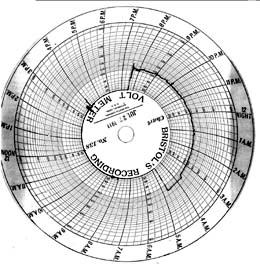On September 11, 1905, Thomas Moran, Neil Brown and Nels K. Tvete, organize and incorporate the Arlington Water, Light and Power Company. They will build Jim Creek Dam, a 60-foot-high, dam to bring power and water to the town of Arlington. Persistent flooding and challenges in court will try the company, but the dam is the pride of the area. At one time it will be the highest hydroelectric dam in the world. In 1924 it will be bought out by Puget Sound Power & Light Company and eventually closed.
Light to Arlington
In the fall of 1905, Moran, Brown and Tvete formed the Arlington Water, Light and Power Company to take over a small steam-power plant that provided both water and light to the town. E. G. Robinson, engineer and the new superintendent, soon discovered that the old company did not keep good books. It was hard to follow the relative costs of each service. He sought to change that. Taking possession on December 1, 1905, the new firm went to work on a partially built dam seven miles to the east and up a creek, named after a local Coast Salish man Jim Gardner, who had been born at its mouth. Made of logs, this coffer dam was the first dam to supply electricity to Arlington. It washed out in March 1906.
Immediately a contract was made to build a concrete dam. It was major undertaking, as no wagon roads existed at the time in this rugged, forested area. Concrete was brought in barrels. Crossing the Stillaguamish to the east where the river was low, the workers brought the material to the project and completed the dam in November. (Harry Yost to Janet Oakley Oct. 15, 2007).
The structure was 63 feet high and six feet thick at the bottom, at the time the highest hydroelectric dam in the world. A few days after filling the reservoir behind it, the water washed around the intake and wrecked the entire plant. But the dam held. Undaunted, the company installed a boiler for the steam pumps that supplied water to Arlington.
In the spring of 1907, Robinson undertook to reconstruct the wrecked hydraulic plant. Camping at the site, he personally oversaw the work. It was completed on November 3, 1907, and once again provided lights to the town.
Booster Lights and Free Ironing
Some time after 1910, the company’s name was changed to Jim Creek Water, Light and Power Company. The company continued to grow, reflecting the technological advances of its time. Signs and “booster” lighting appeared in town.
The firm experimented with power loads to support a motor in a foundry. Soon it was supplying power to coffee grinders, two forge blowers, one linotype, and two laundries. It took great pride in its service. With 80 percent of the residences using light, the firm could allow free use of electric irons to their flat-rate customers. Monday was washday and on Tuesday, the company kept “all service hot on Tuesday forenoon for ironing.”
Shingle Bolts and Spillways
But things were not always rosy. In August 1913, the company sued the Wisconsin Timber Company and the Brown-Kunze Company over a contract dispute. When the concrete dam was first built, the Wisconsin Timber Company was in possession of a large quantity of timber above the site. They signed a contract on May 22, 1907, giving the light company “the right to flood two hundred acres of land.” In turn, the dam across Jim Creek would be “so constructed as to leave therein a passage-way for water which would be sixty feet wide and about eight feet from the dam to the bottom of the passage-way” (Case File No. 13427).
There was one problem with this. During the extreme dry season, the light company used its steam-power plant in the day and its “said waterpower in the night time,” but to use its water at night, they had to store it during the day. It was not possible to open the spillways for shingles. Jim Creek was not a “floatable or navigational stream" during the extreme dry season.
According to the suit “not since the construction of said dam at any time [had the timber company] been engaged in driving logs, shingle blots or other timber products down Jim Creek” (Case File No. 13427). On August 15, 1913, the Brown-Kruse Company removed the boards from the spillway of the dam and continued to remove the boards so that the shingle bolts would go through. This interference affected the delivery of power and water to the town. Though there is no record of how the suit ended, it gives great insight into how early power companies were run.
End of an Era
In June 16, 1916, the entire property was sold to Warner Marshall of Boston, Mass. The dam kept on providing electricity to Arlington though the company added an 11 KW line from Mount Vernon to Stanwood for an extra power supply to the town in 1918. In 1920 it was discovered that the wood-frame form used to create the dam (the form in which to pour the concrete) was rotten. The frame had never been removed, giving the dam a unique appearance. Underneath the wood, they found that workers hadn’t tamped the concrete down properly.
The aging dam continued to produce electricity, but with its location in the mountains and exposure to rain and windstorms, its usefulness declined. Puget Sound Power & Light Company acquired the company and property in 1924. According to one source, the dam stopped producing in 1928.
In 1935, the Jim Creek Dam was blown up, and that brought the dam to a dramatic end.

